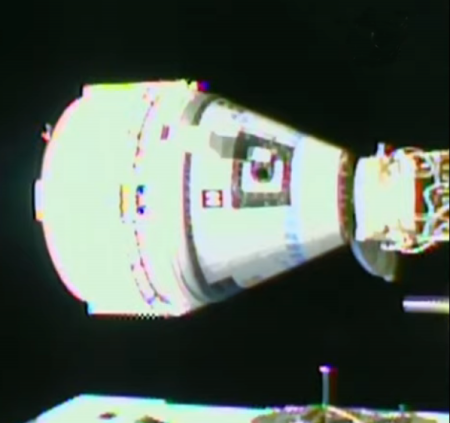Axiom signs deal with Italy to add an Italian module to its commercial space station
Capitalism in space: The commercial company Axiom today announced an agreement with the Italian government to begin design work on an Italian module that will eventually be added to its commercial space station, set to launch in ’24 as an addition to ISS that will eventually separate and fly independently.
The language of the press release is couched in a lot of vague statements, but this paragraph is the most revealing:
While the [agreement] is exploratory in nature, areas of cooperation outlined in the agreement include mutual definition of potential user requirements as well as technological solutions and operational concepts for an Italian module that could later be developed and integrated into the Axiom Space Station. The project could take the form of a public-private framework with the governance and business models developed over time. Other areas of cooperation include collaborative development and implementation of research supporting space exploration and technology, including advanced materials, pharmaceuticals, on-orbit manufacturing, space security, aerospace medicine, simulation and robotics, and other areas of mutual interest as determined by the two parties, as well as training and mission operations.
The deal will likely lead to Italy paying Axiom to build the module as well as provide that country support when it begins using that module for research and commercial development.
Nor is this Axiom’s only deal with other countries. Both Hungary and the UAE have signed agreements to fly in some manner with Axiom.
Capitalism in space: The commercial company Axiom today announced an agreement with the Italian government to begin design work on an Italian module that will eventually be added to its commercial space station, set to launch in ’24 as an addition to ISS that will eventually separate and fly independently.
The language of the press release is couched in a lot of vague statements, but this paragraph is the most revealing:
While the [agreement] is exploratory in nature, areas of cooperation outlined in the agreement include mutual definition of potential user requirements as well as technological solutions and operational concepts for an Italian module that could later be developed and integrated into the Axiom Space Station. The project could take the form of a public-private framework with the governance and business models developed over time. Other areas of cooperation include collaborative development and implementation of research supporting space exploration and technology, including advanced materials, pharmaceuticals, on-orbit manufacturing, space security, aerospace medicine, simulation and robotics, and other areas of mutual interest as determined by the two parties, as well as training and mission operations.
The deal will likely lead to Italy paying Axiom to build the module as well as provide that country support when it begins using that module for research and commercial development.
Nor is this Axiom’s only deal with other countries. Both Hungary and the UAE have signed agreements to fly in some manner with Axiom.


